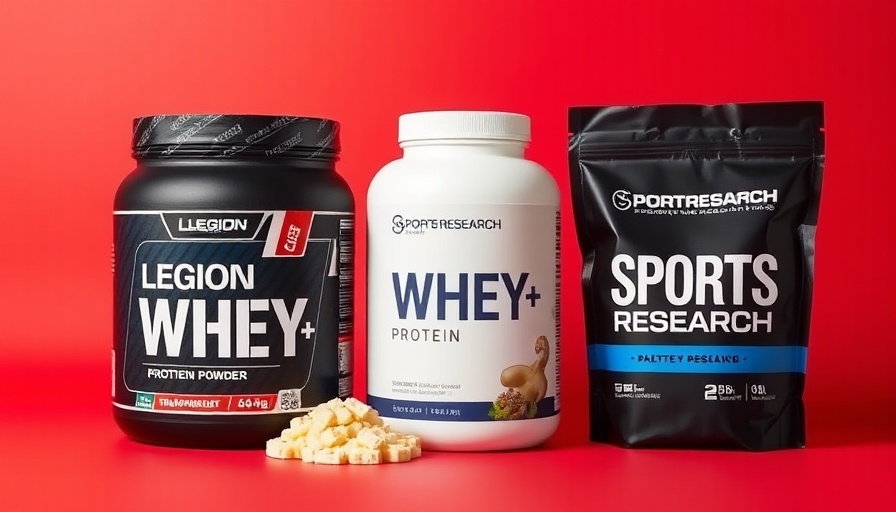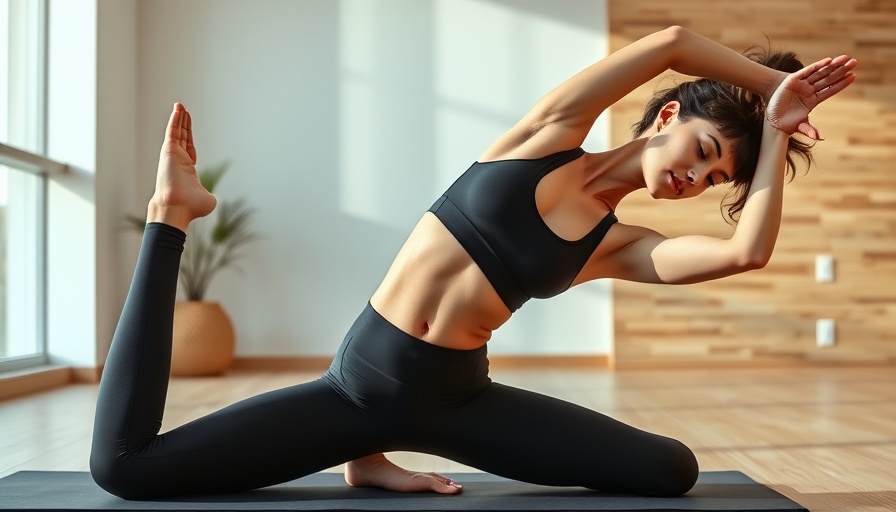
The Rise of Whey Protein: A Nutritional Powerhouse
Whey protein has become a staple in the diets of fitness enthusiasts and those looking to enhance their overall nutritional intake. Why is this particular protein powder so revered? With its capacity to supply all nine essential amino acids, whey protein aids in muscle recovery and growth, making it an ideal companion in fitness regimens. Beyond mere muscle gain, it serves diverse dietary needs—from weight management to novel culinary creations.
Understanding Whey Protein Types: Choosing What’s Best for You
To navigate the various forms of whey protein—concentrate, isolate, and hydrolysate—it's essential to understand their unique properties. Whey isolate, for example, contains a higher protein concentration with fewer fats and carbs, making it easier to digest, a crucial consideration for those with sensitive stomachs. Hydrolysate, on the other hand, is pre-digested, offering rapid absorption, whereas concentrate is often more affordable but contains more lactose. Each kind comes with its advantages, tailored to different lifestyle choices.
The Best Choices for 2025: Quality and Taste Matter
After testing over 50 whey protein powders, our experts have concluded that taste and quality are paramount. This year’s standout option is Transparent Labs 100% Grass-Fed Whey Protein Isolate, lauded not only for its exceptional quality but also for its natural sourcing. With many athletes preferring Grass-fed options—due to perceived health benefits and ethical considerations—this choice resonates well with a conscientious consumer base.
What Sets Top Whey Protein Powders Apart?
When evaluating whey protein powders, several factors matter greatly—protein content, macronutrient distribution, and ingredient transparency. For instance, powders like Sports Research Whey Protein have been highlighted for their quality chocolate flavor while still packing a protein punch, catering to both taste buds and nutritional needs. Similarly, Gainful Protein Powder excels in customizability, appealing to consumers looking to tailor their protein source to their specific tastes and preferences.
Top Picks and Their Unique Features
- Transparent Labs 100% Grass-Fed Whey Protein Isolate: Best overall for purity and taste.
- Sports Research Whey Protein: Best chocolate flavor, enhancing the protein experience.
- Nutricost Grass-Fed Whey Protein Concentrate: Exceptional value and nutrition for the discerning buyer.
- Legion Whey+: Ideal for vanilla aficionados, merging flavor with function.
- Gainful Protein Powder: The best for customization and personal preferences.
The Impact of Quality Ingredients on Your Health
It's vital to choose whey protein products with high-quality ingredients and minimal additives. With research showing potential health risks from synthetic sweeteners, opting for powders without these components can enhance long-term health outcomes. This trend is shaping consumer preferences towards partnering with brands that prioritize clean formulations.
How to Incorporate Whey Protein Into Your Daily Routine
Integrating whey protein into your diet isn’t just limited to shakes. Consider innovative recipes like protein-packed pancakes, energy bars, or even smoothies to amplify your nutritional content effortlessly. This adaptability allows for seamless incorporation without compromising on flavor or health benefits.
Looking Ahead: Trends in Protein Powder Development
The future of whey protein development is bright, with trends leaning towards sustainability and ethical sourcing. As more consumers demand transparency in labeling and sourcing, brands are pivoting to utilize whey protein from grass-fed cows, organic sources, and even exploring plant-based alternatives. This evolving landscape not only meets consumer desires for responsible eating but also pushes the nutritional envelope to cater to broader dietary needs.
As you navigate the world of whey protein powders, keep these insights in mind to make informed choices that align with your health goals. Choosing the right whey protein isn’t just about meeting protein quotas; it’s about fostering a healthier lifestyle informed by quality choices and sustainable practices.
Take charge of your nutrition!
Explore the best whey protein options available today and find the perfect fit for your lifestyle. Whether you opt for delicious flavors or prioritize nutrition above all, making choices that benefit your health is an empowering step towards your fitness journey.
 Add Row
Add Row  Add
Add 




Write A Comment